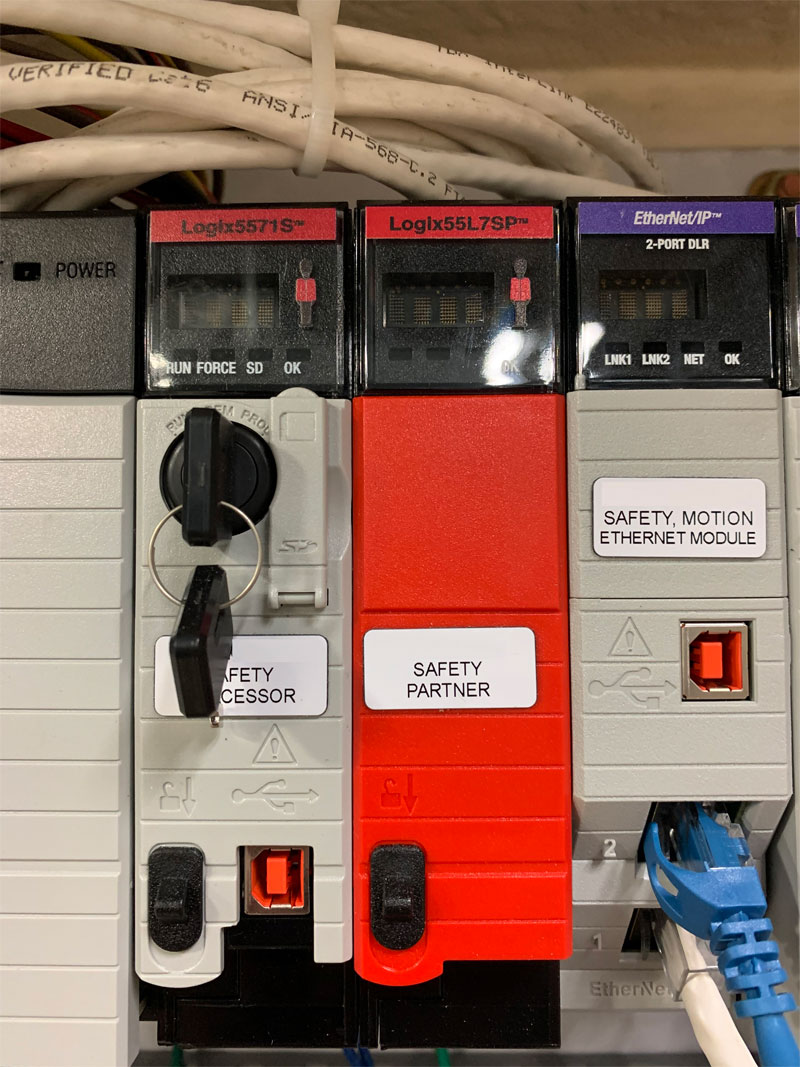
For a machine application that involves a safety system, guarding or other needed safety equipment, Rockwell, as well as other vendors, provide safety solutions that meet the requirements to replace safety relays and hard-wired safety controls up to SIL 3 applications.
In this article, I will hopefully explain what some of the standards and requirements mean, as well as, outline the basics around the different controllers that Rockwell offers.
Image by Brandon Cooper
International Electrotechnical Commission (IEC) Standard 61508:
IEC 61508 is a basic functional safety standard applicable to all industries. It defines functional safety as: “part of the overall safety relating to the EUC (Equipment Under Control) and the EUC control system which depends on the correct functioning of the E/E/PE safety-related systems, other technology safety-related systems and external risk reduction facilities.”
The fundamental concept is that any safety-related system must work correctly or fail in a predictable (safe) way.
The standard has two fundamental principles:
- An engineering process called the safety life cycle is defined based on best practices in order to discover and eliminate design errors and omissions.
- A probabilistic failure approach to account for the safety impact of device failures.
Safety Integrity Level (SIL):
SIL is a relative level of risk reduction provided by a safety function. SIL ratings correlate to frequency and severity of hazards and determine the performance required to maintain and achieve safety as well as the probability of failure.
There are four SILs and the higher the SIL, the greater the risk of failure. The greater the risk of failure, the higher the safety requirements are.

Rockwell Safety Programmable Controllers:
- SmartGuard 600 Controllers with Safety
- For small applications, features 16 digital inputs, 8 digital outputs, 4 test pulse sources and connections for USB and DeviceNet communication
- Programmed with Logic Editor in RSNetworx for DeviceNet software
- Certified for use in safety applications up to and including SIL 3, according to IEC 61508, PL(e) according to ISO 13849-1, and CAT 4, according to EN 954-1
- CompactLogix 5370, CompactLogix and Compact GuardLogix 5380 Controllers
- For medium sized applications
- Certified for use in safety applications up to and including SIL 3, according to IEC 61508, SIL CL3 per IEC 62061, Performance level PLe Cat 4 per ISO 13849-1
- Programmed with Studio 5000 Logix Designer Application
- Ideal for applications with high performance communications and motion up to 32 axes
- ControlLogix 5570 & ControlLogix 5580 Controllers
- For the largest and highest performance applications
- Programmed with Studio 5000 Logix Designer Application
- Certified for use in safety applications up to and including SIL 3, according to IEC 61508, SIL CL3 per IEC 62061, Performance level PLe Cat 4 per ISO 13849-1
- The 5580 provides motion control up to 256 axes
References:
- Safety_integrity_level
- IEC_61508
- 1752-um001_-en-p.pdf
- 1756-rm099_-en-p.pdf
- 1756-rm093_-en-p.pdf
- Safety-controllers.html
Conclusion
Hopefully, this overview will give you some insight as to what a safety integrity level is and what the Safety PLC offerings from Rockwell are certified for. Each of these offerings would most likely come down to the size of the project as to what is needed.
If you have a safety gate and a light curtain and just a few I/O points, then a SmartGuard 600 might be all that is needed. However, if the project contains high performance needs and motion control, you may want to go with the latest and greatest 5580.
In part two of this series, I plan to go into safety logic and instructions that are in the safety processor.
Written by Brandon Cooper
Senior Controls Engineer and Freelance Writer
Have a question? Join our community of pros to take part in the discussion! You'll also find all of our automation courses at TheAutomationSchool.com.
Sponsor and Advertise: Get your product or service in front of our 75K followers while also supporting independent automation journalism by sponsoring or advertising with us! Learn more in our Media Guide here, or contact us using this form.
- Things I’ve Learned Travelling for Work (2) - July 17, 2025
- Things I’ve Learned Travelling for Work (1) - July 10, 2025
- Emulating an Allen-Bradley E3 or E3 Plus - June 30, 2025

Discover more from The Automation Blog
Subscribe to get the latest posts sent to your email.




